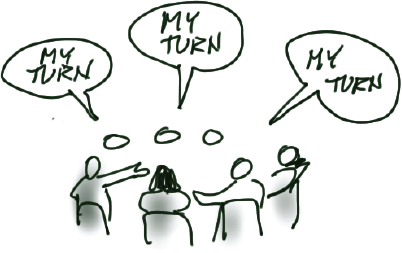Chapter 4. Getting People Involved: Using Pictures to Interact
I remember the first time I really connected with the power of visual meetings to engage people. I was leading a seminar for a group of young people participating in the Coro Fellowship for Public Affairs. They were all placed in internships in different government agencies in San Francisco. One was with the mayor's office, one in city planning, one with the police and so forth for 12 assignments. The founders of Coro believed that people learn best when fully immersed in their own experiences, making sense out of things themselves. As a result staff were not allowed to lecture or present, but could facilitate discussions.
I had gone through the program myself in Los Angeles in 1965 and it had been an incandescent year of learning. Now I was on the staff and wasn't able to be out on assignments. I really wanted to find out what was going on and was impatient with our Friday seminars turning into story-telling sessions that didn't seem to have much depth. One person would talk, then another would tell a different kind of story, basically sharing time, but not really focusing down on anything, and changing topics a lot.
Friday seminars turning into storytelling sessions that didn't seem to have much depth.

One day I decided to change the way we met. I wanted the Fellows to understand the overall system of government and talk ...
Get Visual Meetings: How Graphics, Sticky Notes and Idea Mapping Can Transform Group Productivity now with the O’Reilly learning platform.
O’Reilly members experience books, live events, courses curated by job role, and more from O’Reilly and nearly 200 top publishers.

